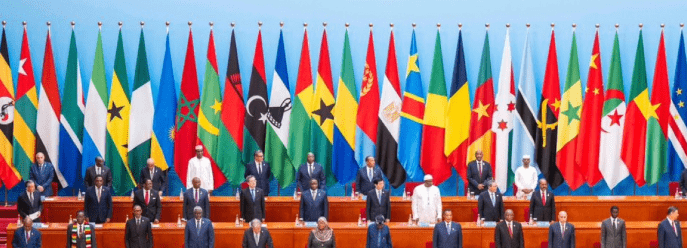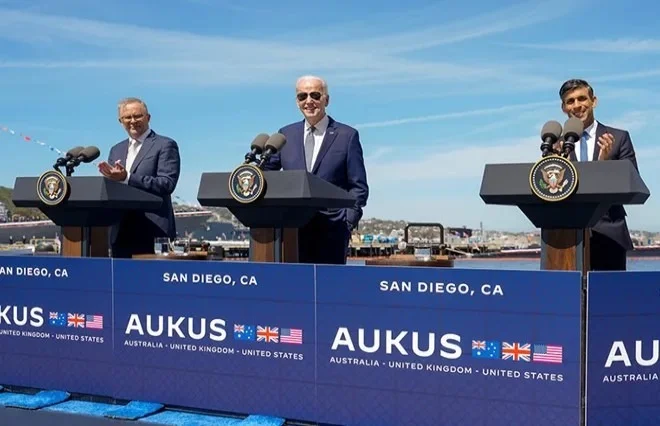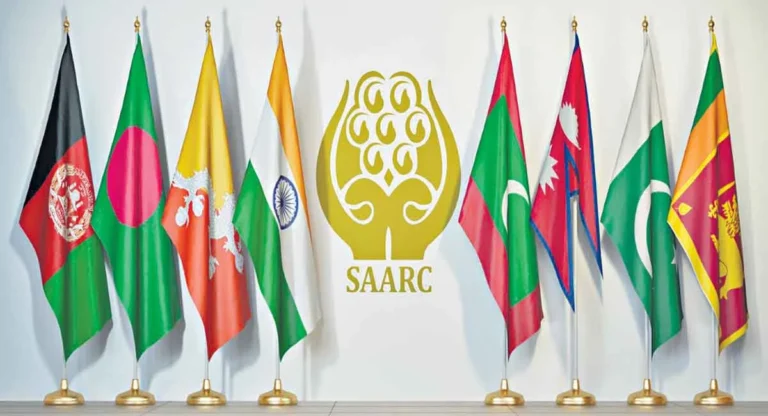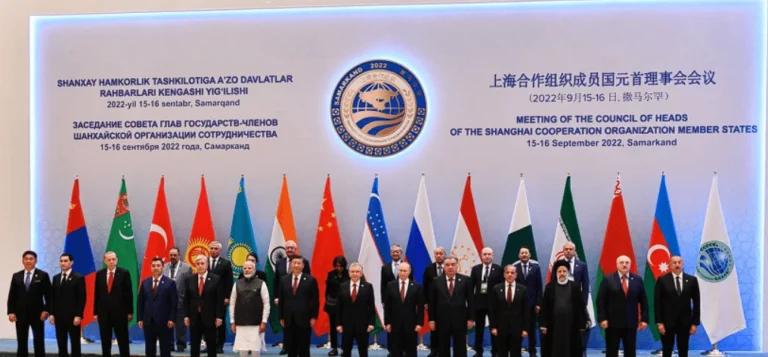SEATO
The Southeast Asia Treaty Organization (SEATO) was an international organization created during the Cold War to prevent the spread of communism in Southeast Asia. Inspired by the success of NATO in Europe, SEATO was established in 1954 to create a collective defense mechanism for the region. Despite its ambitious goals, the organization struggled with internal challenges and eventually dissolved in 1977.
The Southeast Asia Treaty Organization (SEATO), established in 1954, was created to counter the spread of communism in Southeast Asia and promote regional stability through collective defense. While it achieved some success in fostering cooperation among its members and providing aid to the region, SEATO ultimately fell short of its primary objectives. Its limited effectiveness was due to internal weaknesses, divergent interests among members, and challenges in adapting to the complex geopolitical realities of the Cold War.
SEATO was a bold attempt to curb communism in Southeast Asia, reflecting the priorities of Western powers during the Cold War. However, its limited regional representation, lack of cohesion, and ultimate inability to fulfill its objectives led to its dissolution. Today, SEATO serves as a historical lesson in the challenges of creating regional alliances in politically fragmented areas.
Historical Background
- Cold War Context
- After World War II, the spread of communism became a major concern for Western powers, especially with the emergence of communist regimes in China (1949) and North Korea.
- The Korean War (1950–1953) heightened fears of communist expansion into Southeast Asia, particularly in nations like Vietnam, Laos, and Cambodia.
- The Domino Theory, popularized by U.S. policymakers, suggested that the fall of one Southeast Asian country to communism would lead to the collapse of others.
- Geneva Conference (1954)
- Following the end of the First Indochina War, the Geneva Conference divided Vietnam into North (communist) and South (non-communist), further emphasizing the ideological divide in the region.
- Formation of SEATO
- The United States spearheaded the establishment of SEATO to counter the communist threat.
- The Southeast Asia Collective Defense Treaty, or the Manila Pact, was signed on September 8, 1954, in Manila, Philippines, formally creating SEATO.
Objectives of SEATO
- Containment of Communism
- The primary goal was to prevent communist insurgencies and influence in Southeast Asia.
- SEATO aimed to act as a deterrent against aggression, similar to NATO’s role in Europe.
- Collective Security
- Member states pledged to provide mutual defense and consultation in the event of external aggression or subversion against any signatory nation.
- Economic and Cultural Development
- In addition to military goals, SEATO promoted economic growth, cultural cooperation, and technical assistance to strengthen the political stability of its members.
Membership
SEATO included a mix of countries from different regions, which were not geographically limited to Southeast Asia.
- Founding Members (8):
- Western Nations: United States, United Kingdom, France, Australia, New Zealand.
- Asian Nations: Thailand, Philippines, Pakistan (which included present-day Bangladesh).
Notably absent were key Southeast Asian countries like Indonesia, Vietnam, and Burma (Myanmar). This limited its regional representation.
Structure
- Council of Ministers
- The highest decision-making body, comprising representatives from member states, met annually to discuss policies and strategies.
- Committees
- Defense, economic, and cultural committees were formed to oversee specific areas of cooperation.
- Headquarters
- Located in Bangkok, Thailand, SEATO’s headquarters symbolized its focus on the Southeast Asian region.
Key Activities and Achievements
- Military Cooperation
- SEATO conducted joint military exercises to enhance coordination among member states.
- Provided military aid to member and non-member countries, including support for South Vietnam during the Vietnam War.
- Non-Military Initiatives
- Sponsored educational programs, scholarships, and public health initiatives.
- Supported infrastructure projects in member states to promote economic development.
- Support for South Vietnam
- Although South Vietnam was not a formal member, SEATO played a role in supporting its anti-communist government through the deployment of military advisors and aid.
Challenges and Criticisms
- Limited Regional Representation
- Many Southeast Asian nations, including Indonesia and Malaysia, declined to join SEATO due to concerns about Western dominance.
- This lack of inclusivity weakened SEATO’s legitimacy and effectiveness in the region.
- Divergent Member Interests
- Member countries had differing priorities and levels of commitment.
- For instance, France and the UK were less willing to engage militarily in Southeast Asia compared to the United States.
- Internal Instability
- Member nations like Pakistan experienced political turmoil, diverting attention from SEATO’s objectives.
- Failure in Vietnam
- SEATO’s inability to prevent the fall of South Vietnam to communism in 1975 was seen as a significant failure.
- Lack of Military Cohesion
- Unlike NATO, SEATO lacked a unified command structure, making coordinated military responses challenging.
Dissolution of SEATO
- Changing Geopolitical Landscape
- By the 1970s, the Cold War dynamics shifted, and the Vietnam War led to disillusionment with military interventions.
- U.S. foreign policy pivoted towards détente with China and the Soviet Union, reducing the perceived need for SEATO.
- Internal Decline
- Several members, including France and Pakistan, withdrew or became less active in the organization.
- Formal Dissolution
- SEATO was formally disbanded on June 30, 1977, after years of declining relevance and effectiveness.
Legacy of SEATO
While SEATO was short-lived, it reflected the strategic importance of Southeast Asia during the Cold War. It highlighted the challenges of building alliances in a region marked by diverse political and cultural landscapes. Although it failed to replicate NATO’s success, SEATO’s existence underscores the complexities of collective defense in an era of ideological confrontation.
How Far Did SEATO Serve Its Purpose
Successes of SEATO
- Military Training and Cooperation
- SEATO conducted regular military exercises and provided training programs for its member states.
- These activities enhanced the defense capabilities of smaller member nations like Thailand and the Philippines, bolstering their ability to resist external threats.
- Economic and Cultural Contributions
- SEATO invested in economic development and public health projects, such as infrastructure improvements and scholarships.
- These non-military initiatives helped to build goodwill and improve living standards in member nations.
- Support for South Vietnam
- Although South Vietnam was not a formal member, SEATO provided indirect support during the Vietnam War, including military aid and advisory missions.
- This demonstrated SEATO’s commitment to containing communism in one of the most contested regions of the Cold War.
- Political Symbolism
- SEATO symbolized Western resolve to combat communism in Asia and reassured smaller nations of international support against aggression.
Limitations and Failures of SEATO
- Failure to Prevent Communist Expansion
- SEATO’s primary purpose was to contain communism, but it failed to achieve this objective. The fall of South Vietnam (1975), Laos, and Cambodia to communist regimes marked a significant setback.
- The Vietnam War highlighted SEATO’s limited ability to coordinate effective military action.
- Lack of Regional Representation
- Key Southeast Asian countries like Indonesia, Malaysia, and Vietnam were not part of SEATO, reducing its influence and legitimacy in the region.
- SEATO’s membership was dominated by Western powers, leading to criticism that it was a tool of U.S. foreign policy rather than a genuinely regional alliance.
- Divergent Interests Among Members
- Member nations had differing priorities and levels of commitment. For example:
- The United States was heavily invested in combating communism, while France and the United Kingdom were reluctant to engage militarily in Asia.
- Pakistan’s interest in SEATO was driven by its rivalry with India rather than concerns about communism in Southeast Asia.
- Member nations had differing priorities and levels of commitment. For example:
- Absence of a Unified Military Command
- Unlike NATO, SEATO lacked a cohesive military structure, making joint operations and collective defense difficult to implement effectively.
- This organizational weakness limited its capacity to respond to crises.
- Dependence on the United States
- SEATO’s activities were heavily reliant on U.S. funding and leadership.
- When U.S. interest in the region waned during the 1970s, SEATO lost much of its momentum and relevance.
- Limited Response to Internal Threats
- SEATO was primarily focused on external aggression, but many of the challenges in Southeast Asia, such as communist insurgencies, were internal.
- The organization lacked the capacity to address these domestic threats effectively.
Final Assessment
SEATO served its purpose to a limited extent:
- It provided a platform for military collaboration, economic development, and symbolic resistance to communism.
- However, it failed to deliver on its central promise of preventing communist expansion in Southeast Asia.
- The organization’s shortcomings—such as weak regional representation, lack of military cohesion, and dependence on U.S. leadership—undermined its effectiveness.




